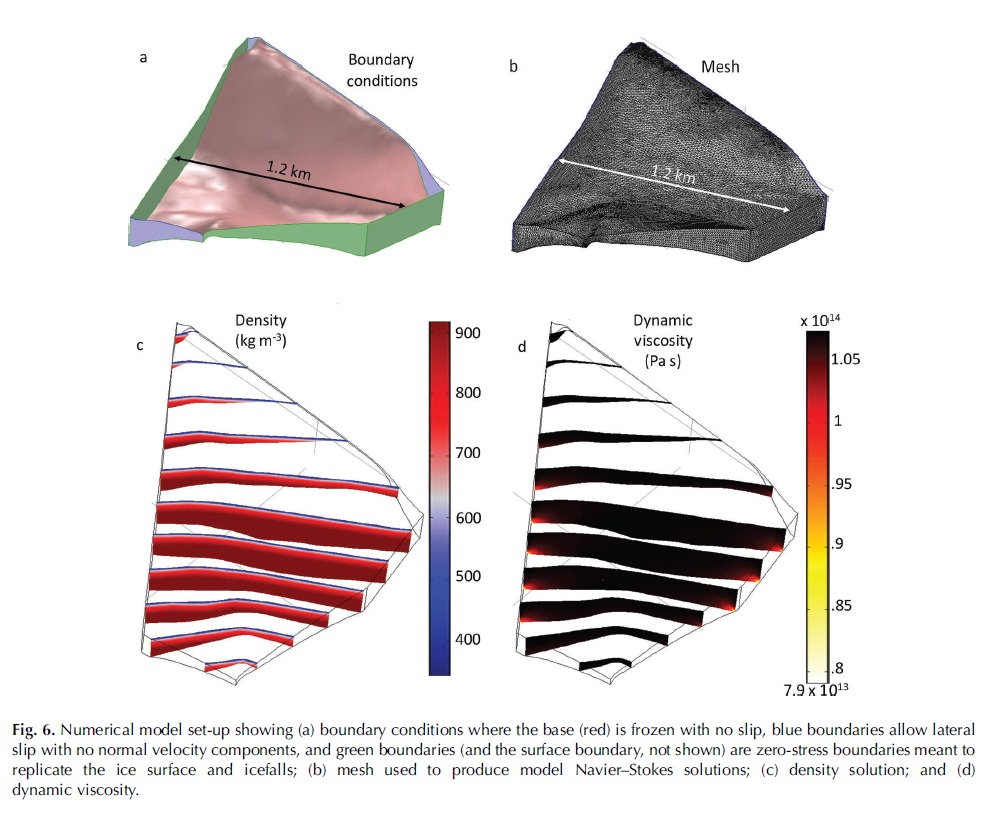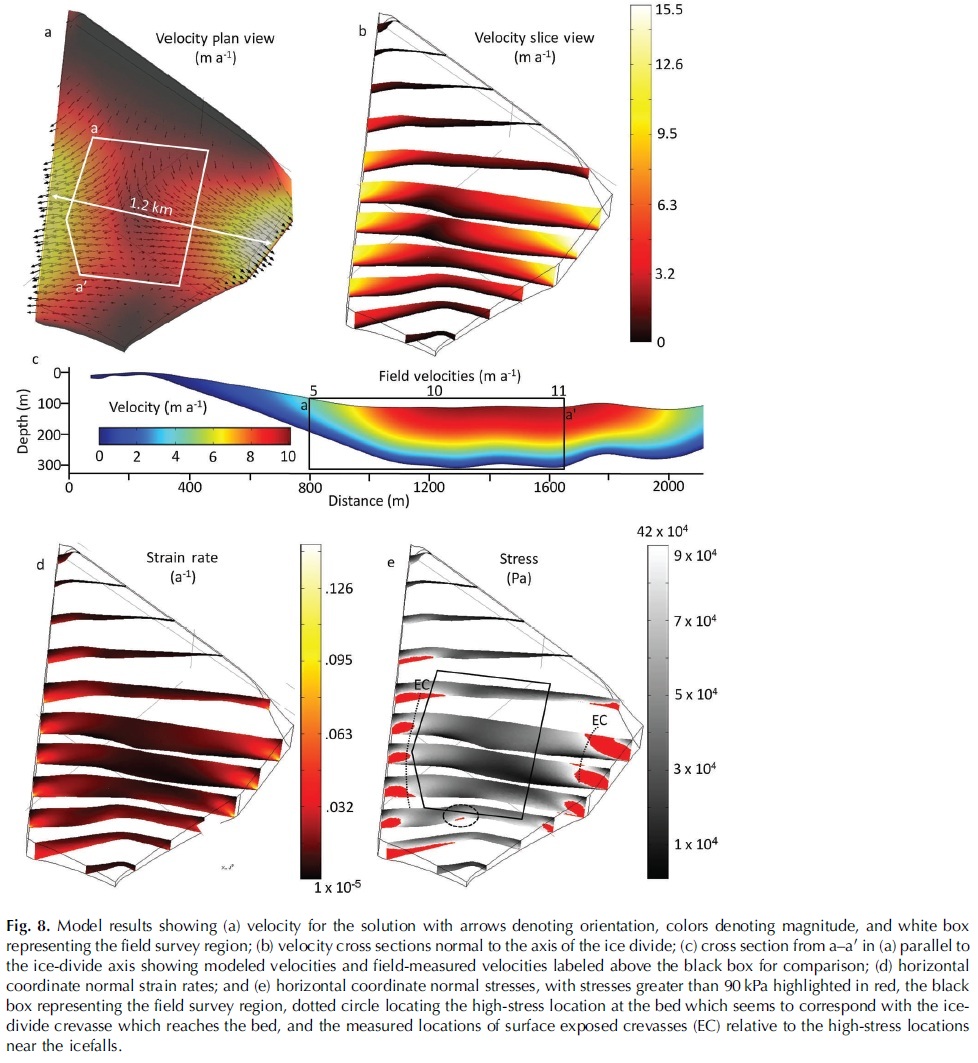Difference between revisions of "Hunter Ice Field"
| Line 1: | Line 1: | ||
| − | Ice flow modeling of the Hunter Ice Divide | + | <h2 id="mp-itn-h2" style="margin:0.5em; width:80em; background:#cedff2; font-family:inherit; font-size:110%; font-weight:normal; border:1px solid #a3b0bf; color:#000; padding:0.2em 0.4em;"> |
| + | ==Ice flow modeling of the Hunter Ice Divide== | ||
| − | + | '''Abstract:''' Crevasse initiation is linked to strain rates that range over three orders of magnitude (0.001 | |
| − | |||
| − | |||
| − | |||
| − | Crevasse initiation is linked to strain rates that range over three orders of magnitude (0.001 | ||
and 0.163 a–1) as a result of the temperature-dependent nonlinear rheological properties of ice and from | and 0.163 a–1) as a result of the temperature-dependent nonlinear rheological properties of ice and from | ||
water and debris inclusions. Here we discuss a small cold glacier that contains buried crevasses at and | water and debris inclusions. Here we discuss a small cold glacier that contains buried crevasses at and | ||
| Line 17: | Line 14: | ||
topography; however, the dynamics that caused its formation are not entirely clear. | topography; however, the dynamics that caused its formation are not entirely clear. | ||
| − | <gallery heights= | + | </h2> |
| + | |||
| + | |||
| + | <h4 id="mp-itn-h4" style="margin:0.1em; background:#ffffff; border:1px solid #a3b0bf; color:#000; padding:0.1em 0.2em;"> | ||
| + | <gallery heights=700 widths=700 mode=packed> | ||
File:hunter_setup.jpg|Model Setup | File:hunter_setup.jpg|Model Setup | ||
File:hunter_results.jpg|Model Results | File:hunter_results.jpg|Model Results | ||
</gallery> | </gallery> | ||
| + | </h4> | ||
| + | |||
| + | |||
| + | Figures are from: | ||
| + | |||
| + | Campbell, S., Roy, S.G., Kreutz, K., Arcone, S., Koons, P.O., Osterberg, E. (2013). Strain Rate Estimates for Crevasse formation at an Alpine Ice Divide: Mount Hunter, Alaska. Annals of Glaciology, 54(63). | ||
Latest revision as of 13:38, 11 April 2018
Ice flow modeling of the Hunter Ice Divide
Abstract: Crevasse initiation is linked to strain rates that range over three orders of magnitude (0.001 and 0.163 a–1) as a result of the temperature-dependent nonlinear rheological properties of ice and from water and debris inclusions. Here we discuss a small cold glacier that contains buried crevasses at and near an ice divide. Surface-conformable stratigraphy, the glacier’s small size, and cold temperatures argue for limited rheological variability at this site. Surface ice-flow velocities of (1.2–15.5)⌃0.472ma–1 imply classic saddle flow surrounding the ice divide. Numerical models that incorporate field-observed boundary conditions suggest extensional strain rates of 0.003–0.015 a–1, which fall within the published estimates required for crevasse initiation. The occurrence of one crevasse beginning at 50m depth that appears to penetrate close to the bed suggests that it formed at depth. Field data and numerical models indicate that a higher interior stress at this crevasse location may be associated with steep convex bed topography; however, the dynamics that caused its formation are not entirely clear.
Figures are from:
Campbell, S., Roy, S.G., Kreutz, K., Arcone, S., Koons, P.O., Osterberg, E. (2013). Strain Rate Estimates for Crevasse formation at an Alpine Ice Divide: Mount Hunter, Alaska. Annals of Glaciology, 54(63).

